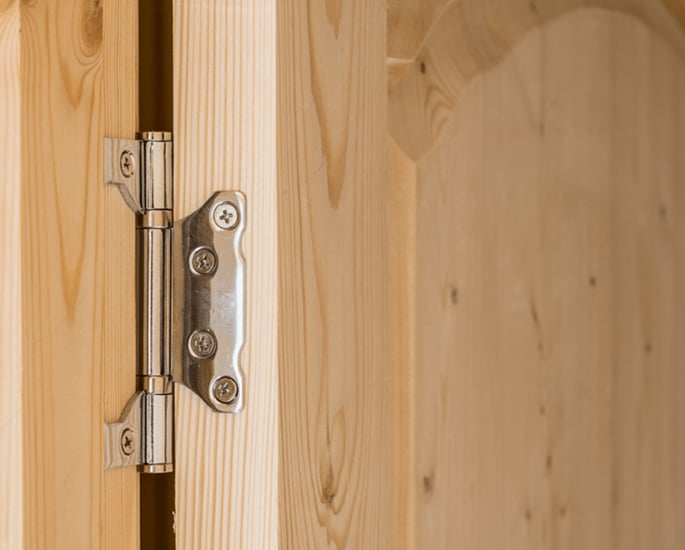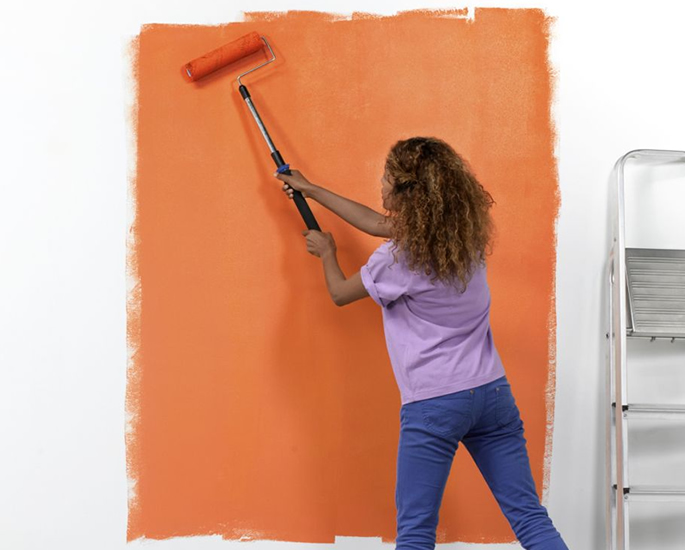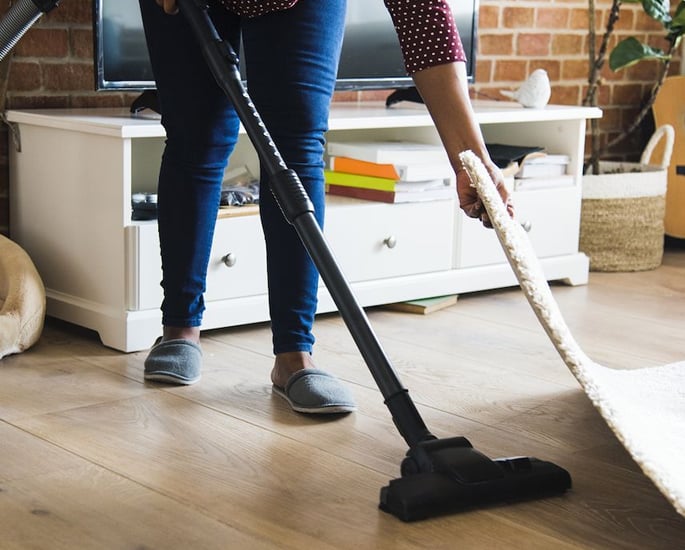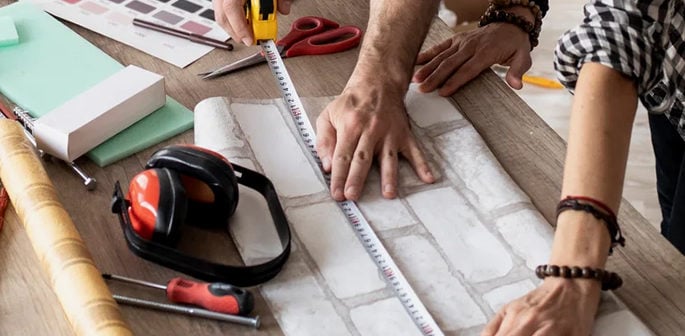let them remove and replace cabinet doors for additional jobs.
More people are turning to DIY when it comes to home improvements, therefore, they are improving their DIY skills.
One of the main reasons is to save costs. Hiring someone to carry out a project may result in a professional job but it can be expensive.
Not only does it cost a lot to purchase the required materials but tradespeople also have to be paid to carry out the labour.
Thankfully there are a number of simple home improvement projects that you can carry out yourself and can involve the kids.
Not only will a lot of money be saved but the time spent with children will be fun and interactive.
It will also give a real sense of achievement as well as some mental stimulation.
But before beginning any DIY projects, there are a number of preparations that need to be made to ensure safety for both you and your children. They are:
- Wear eye protection
- Tie up loose hair
- Wear closed-toe shoes
- Clean up after each work period
- When using a saw, always use a clamp or vice to prevent accidents
Here are some projects to do at home which will improve social interaction with your children as well as improve your own DIY skills.
Fixing Squeaky Hinges

Squeaky hinges may sound like a small job but it is a perfect one to tackle with children, whether it be a door or a piece of furniture.
Children can learn to make short work of quieting a squeaky door hinge.
Work with them to locate where the noise is coming from then give them a can of WD-40 and show them how to carefully spray the hinge.
If they are up to the task, let them remove and replace cabinet doors for additional jobs.
Another tip is to use olive oil or petroleum jelly instead of WD-40. Just make sure that a cloth is placed at the bottom to catch drips. The benefit of petroleum jelly is that it does not run.
It is worth the time as it can set you back £30 when getting a handyman to change them.
Flooring

Doors are not the only things that creak. Wood floors tend to creak typically due to the boards rubbing against each other or the sub-floor.
This can be expensive when hiring a tradesperson. It will cost approximately £30 an hour and usually, it will take an average of three hours to tackle one room. So that is £90 spent which could have been better spent on something else.
Thankfully, the noise can be gone in just 10 minutes and without the need of a handyman.
With the help of your child, sprinkle talcum powder, soapstone powder or powdered graphite within the gaps between the boards.
The best way is to put an old towel or cloth down after applying the powder. Walk on it to work the powder into the boards.
Paint Job

One of the most common DIY skills is painting but to save time, many hire a professional. However, it can take them a full day to paint a room properly at a cost of a couple of hundred pounds.
But painting can be one of the most constructive and fun things to do with a child. It is like an extension of their artwork they might do on paper but instead, it’s on a wall!
A DIY paint job will save a lot of money, paying for just brushes and paint.
It will also refresh each room, whether it be little touch-ups or entire walls. Places like skirting boards and door frames are likely to show some wear so it is amazing what a fresh coat of paint can do.
Use masking tape to ensure crisp, straight lines around difficult areas like switches and sockets.
This is a great way to spend some time with the children and at the same time, brighten up the home.
Wallpaper
Just like painting, applying wallpaper to a room can transform the look and feel of it.
It is a bold and lengthy DIY move but it is one that can be done with the help of the children.
Kids can help with specific parts of the job, like applying the glue for you, once a piece is ready to hang or washes the brushes and tools after.
This DIY project can potentially save hundreds of pounds. To have a room professionally stripped and re-done can cost up to £600. While it may take a while longer, the effort will be worth it.
It might be that you want to wallpaper a feature wall or the whole room.
But ensure that the area wall is prepped and buy enough rolls of wallpaper to allow for pattern matching and any mistakes.
Remove any existing wallpaper well before you plan on re-papering to allow time to overcome any problems that might be discovered beneath the original paper.
Improve the Garden
One of the most important DIY skills, especially during the warmer weather, is to tackle the garden and it is one area that the children are more than willing to get their hands dirty.
Not only will it provide a chance to get some fresh air with the kids but it will also save money.
Hiring a gardener for six hours will set you back at least £150, so it is well worth doing it yourself.
If the weather is good, take advantage of it by tidying up flower beds and any hanging baskets. Also, lay down new gravel.
Use your children’s help to remove any unsightly weeds from in between paving stones.
It doesn’t have to just be getting rid of weeds and tidying up the plants, sprucing up the front door and outside entrance will give the home a fresh look.
Give the door and surrounding woodwork a lick of paint and clean up door numbers, letterboxes and door knockers.
Try painting the door in different shades. A sage green works well for a country cottage look. A charcoal grey is ideal for an urban townhouse appearance.
Birdhouse
Buying a birdhouse is an easy solution, but getting kids involved to make one with you introduces a huge new spectrum of fun.
Birdhouses can be made from different materials but wood is the most popular for such a DIY project. One option is to buy a birdhouse kit as well.
If you don’t want to use wood you can use a plastic box or old milk or juice carton as well.
Making a birdhouse will engage the children’s imagination and interest to create something they can see being used.
If you are making it from wood you will need a plank of flat wood which you will cut into correct sizes to make the sides and the roof. In addition, you will need some glue and tools to cut a hole for the birds to use as an entrance.
Here is a simple guide from the RSPB to help.
Cleaning

Not every DIY project has to be too drastic or labour intensive. It can be as simple as giving the house a good clean and it is something that the children can easily help with.
Getting organised can make a world of difference and can even make you feel more relaxed in your home.
No real skill is involved and it can be done for the cost of some cleaning products.
For example, if the paperwork is stuffed in a drawer, take time to go through it and organise bills and important documents with dividers.
Anything you don’t need, shred.
Other cleaning tasks include hoovering the floors and wiping surfaces.
Any cleaning job, no matter how small it may be, can leave you with a sense of accomplishment.
No matter how big or small the projects are, they will certainly liven up the home and improve your own DIY skills.
When completing them with children, it will turn laborious tasks into fun, interactive projects with them, as well as alleviate their boredom.
It will also save a lot of money, so try out these DIY skills.
































































